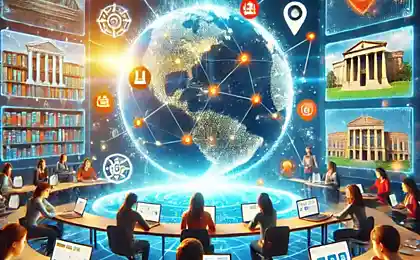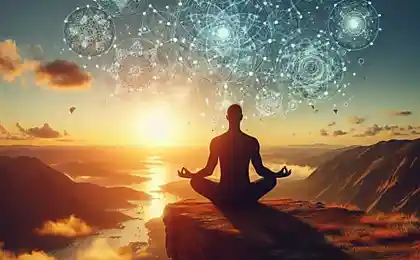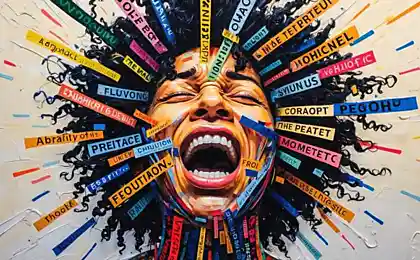559
Lev Vygotsky: a very short introduction
The famous Russian psychologist and one of the founders of neurophysiology Alexander Luria has repeatedly recognized that "all that is good in the development of Russian psychology we owe to Vygotsky".
Lev Vygotsky — a really iconic figure for several generations of psychologists and humanists, and not only domestic.
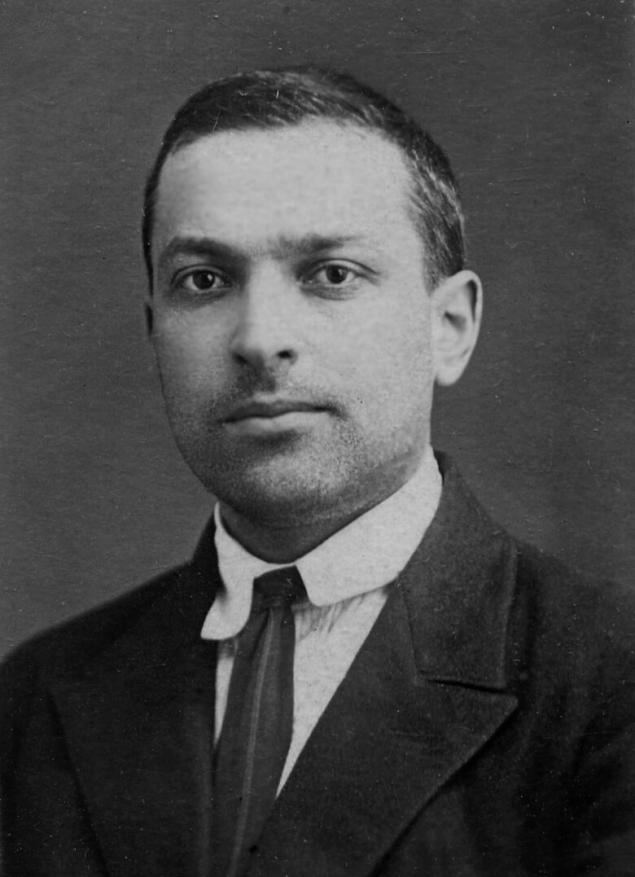
After in 1962 in English was published his work "Thinking and speech", Vygotsky's ideas are widely spread in USA, Europe, and then in other countries. When one of us followers of the cultural-historical school URI to Bronfenbrenner from Cornell University have managed to come to the Soviet Union, he is on the threshold confused Vygotsky's daughter Gita Lvovna: "I Hope you know that your father God is for us?"
Students Vygotsky, however, considered him a genius during his lifetime. Remembers the same Luria, at the end of 20-ies "all of our group had devoted almost all day to our ambitious plan for the restructuring of psychology. L. S. Vygotsky was an idol. When he goes out of town, students wrote poetry in honor of his journey."
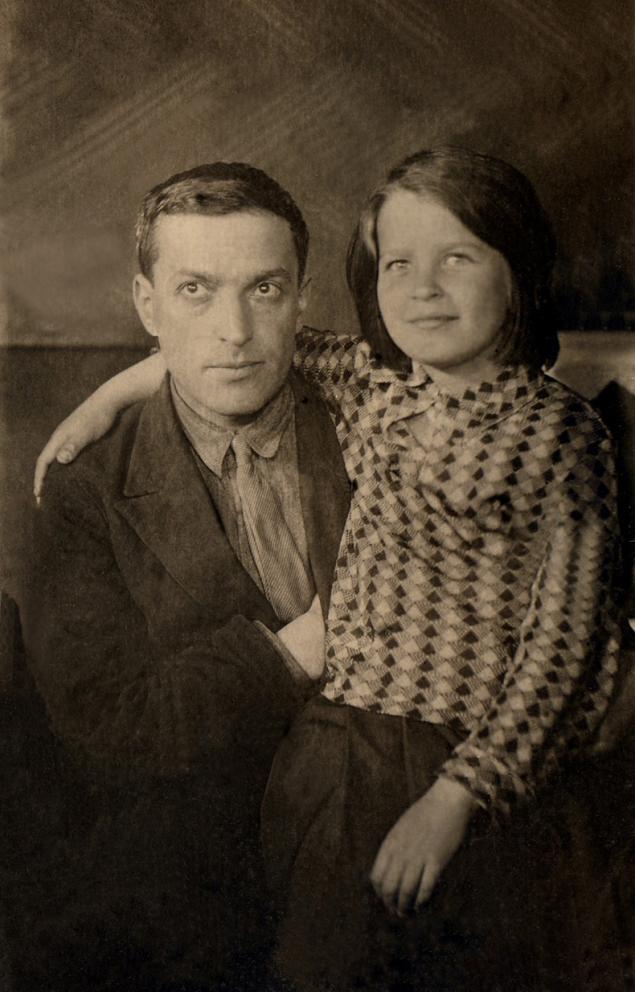
Lev Vygotsky's daughter Gita, 1934.
In difficult conditions of post-revolutionary Russia, did not live up to 38 years, he has offered many solutions to psychological theory and education, which remain fresh today.
Already in 1926, Vygotsky stated: not only domestic but also world psychology is in crisis. Required a complete overhaul of its theoretical bases. All the opposing schools, the development of which rapidly occurs in the first quarter of the twentieth century can be divided into two parts — scientific and idealistic.
The first studies the reflexes and reactions to stimuli, and the latter position is most clearly expressed by Wilhelm Dilthey, who argued that "nature we explain, mental life we understand".
To overcome this opposition and this crisis can only be through the establishment of General psychology — via systematization and ordering of the individual human psyche and behavior. It was necessary to combine explanation and understanding in a unified and holistic approach to the analysis of the human psyche.
What are the most common to all phenomena studied by psychology, making the psychological facts of a variety of phenomena — from the saliva of the dog and to enjoying the tragedy that is common in Brede crazy and strict calculations math?
Lion Vygotskys work "the Historical meaning of psychological crisis"
Man is fundamentally different in that it is minds and characters — and that's what psychology until then ignored (behaviorism and reflexology), considered in isolation from social practice (phenomenology) or substitute the unconscious (psychoanalysis). The way out of the crisis Vygotsky saw in dialectical materialism — although skeptical of attempts to directly adapt the Marxist dialectic in psychology.
Marx was fundamentally important provisions defining the role of public relations, cannon and iconic activities in the formation of the psyche:
The spider makes operations resembling the operations of a weaver, and a bee in the construction of its wax cells doth confound some people-architects. But the worst architect from the best bee from the beginning is characterized in that, before building a cell from wax, he had already built it in my head.
— Karl Marx, Capital, Chapter 5. The labor process and the process of increasing the value of
General psychology, overcoming the disagreements of different schools and approaches in life Vygotsky does not appear — there is none now. But these revolutionary in all respects the years, many believed that it is quite possible: General psychological theory somewhere nearby, "we are now keeping in your hands the thread from her," he wrote in 1926 in the notes, which were later revised and published under the title "Historical meaning of psychological crisis". At that time Vygotsky is in the hospital "Zakhar'ino", where he was urgently gospitalerov due to the escalation of tuberculosis.
Luria later recalled: "the Doctors said that he had only 3 or 4 months, he was placed in a sanatorium... And then he frantically began to write, to leave behind some kind of basic work."
The classical scheme of behaviorism "stimulus — response" Vygotsky turns to the scheme of "stimulus — sign (medium) — response". It was at this time begins to form what will later be called "cultural-historical theory."
In 1927 Vygotsky is discharged from the hospital and together with his colleagues, began to study higher mental functions, which would bring him international fame. He is studying speech and symbolic activities, genetic mechanisms of formation of the psyche in the process of development of children's thinking.
The intermediate element converts the whole scene thinking, change all of its functions. That was a natural reaction, it becomes conscious and socially determined cultural behaviour.
3 thesis psychology Vygotsky
"... Every function in the cultural development of the child appears on the scene twice, in two plans, first social, then — psychological, first between people as a category interesanta, then within the child as an intrapsychic category. This applies equally to arbitrary attention, to logical memory, formation of concepts, the development of will".
Similar ideas at the time was expressed by the French psychologist and philosopher Pierre Janet: those forms of behaviour that others initially used in relation to the child ("wash your hands", "do not talk at the table"), he then transfers himself.
It looks like the famous phrase "General genetic law of cultural development", which Vygotsky suggested in "Thinking and speech". It is about the social origin of consciousness — but to interpret this formula is completely different.
Vygotsky does not claim that social factors entirely determine the development of the psyche. As well as says that consciousness arises out of natural, innate mechanisms of adaptation to the environment.
"Samooborony development is a continuous process, not a puppet, directed by the pulling of two strings". The child emerges as a separate identity only through interaction and active participation in the lives of others.
As shown by the experiments of Luria conducted in Uzbekistan in the early 30-ies, a logical operation that we consider to be natural, occur only in the context of formal learning. If you don't tell the school what is the circle, the idea of the circle itself won't come down from the Platonic world of ideas.
For the illiterate triangle is stand for tea or amulet, a solid circle is a coin, the unfinished circle is the month and nothing in common between them.
Suppose you were offered the following syllogism:
1. In the far North, where there is always snow, all bears are white.
2. New Earth located in the far North.
3. What color are the bears there?
If you have not been taught to think in abstract concepts and solve abstract puzzles, then you will answer something like "I've never been to the North and never seen bears" or "you need to ask the people who have been there and seen."
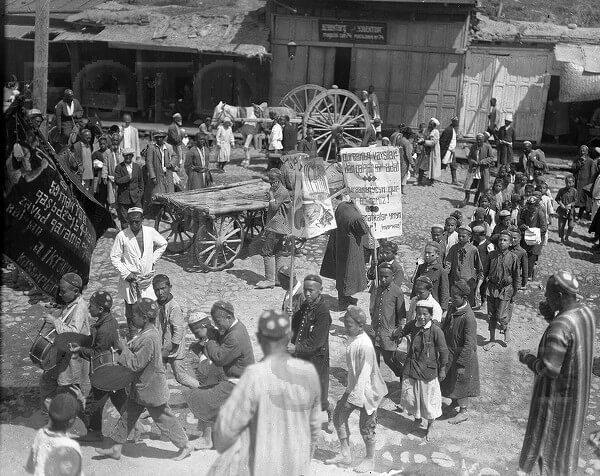
The pioneers are on the Maidan with the drums. Uzbekistan, 1928.
Vygotsky and Luria showed that many of the mechanisms of thinking, which seem to be universal, in fact, due to the culture, history and specific psychological tools that do not arise spontaneously, and absorbed in learning.
"The man introduces artificial stimuli, significare behavior, and using signs creates, by acting from the outside, the new connections in the brain"; "in the higher functional structure, determining whole or focus of the process is the sign and method of its use".
Vygotsky emphasizes that all forms of behavior characteristic of man, are symbolic in nature. Signs used as psychological tools: a simple example is knotted at the memory.
Let's see how the kids play with the cubes. It can be spontaneous play, in which the figures pile up on one another: this cube becomes the machine, the next a dog. The value of the figures is constantly changing, and the child does not come to some kind of sustainable solution. The child likes it — the process brings him pleasure, and the result doesn't matter.
The teacher who considers such an exercise pointless, can offer the child to build a certain shape on the drawn model. There is a clear goal — the child sees, what place should be each cube. But this game is not interesting to him. You can offer a third option: let the child will try to collect from cubes model, which is indicated only approximately. It cannot be copied — you need to find a solution.
In the first version of the game do not specify the behavior of the child — he is driven by a spontaneous flow of imagination. In the second version of the sign (painted model) acts as predsednika sample which you just need to copy it, but the child loses his own activity. Finally, in the third version of the game becomes the goal, but admits many solutions.
This is human behavior, mediated by signs, which give him purpose and meaning, not taking away freedom of choice.
"...By engaging in the behavior, the psychological tool alters the entire flow and structure of mental functions. It achieves this by specifying the structure of a new instrumental act just as a technical tool alters the process of natural adaptation by determining the form of labor operations". But the sign, unlike guns, directed not outward, but inward. It not only conveys a message but also acts as a means of self-determination.
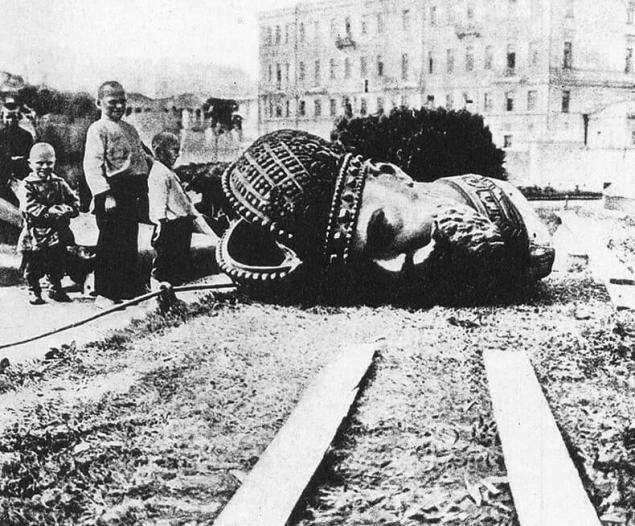
The removal of the monument to Alexander III in Moscow, 1918.
"The immaturity of functions at the beginning of the training is General and the basic law"; "Pedagogy needs to focus not on yesterday's, and tomorrow's the day children's development. Only then will it be able to cause the learning process to life the processes of development that now lie in the zone of proximal development".
The concept of "zone of proximal development" is one of the most famous contributions of Vygotsky in educational theory. Own child can perform a certain range of tasks. With the help of probing questions and prompts of the teacher he can do much more. The gap between these two conditions is called the zone of proximal development. It was through her always carried out any training.
To explain this concept, Vygotsky introduces the metaphor of the gardener who needs to monitor not only ripe, but ripening fruit. Education should focus on the future — something that the child is not yet able, but can learn. It is important to stay within this zone is not to stop the lessons but not try to jump far ahead.
Man cannot exist apart from others — any development always takes place in the team. Modern science has done much not only because it stands on the shoulders of giants — not least a whole lot of people, which for the majority remains anonymous. Genuine talents arise not despite, but because of the surrounding conditions, which encourage and guide their development.
And here Vygotsky pedagogy beyond the class rooms: to provide comprehensive human development, must change the whole society.
Many of the ideas and concepts of Vygotsky remained unformed. Experimental work to verify his daring hypotheses are mainly conducted not by him but by his followers and disciples (so most of the specific examples in this article are taken from Luria). Vygotsky died in 1934, unrecognized, reviled for many years and forgotten by everyone except a narrow circle of like-minded people. Interest in his theory was revived only in the 50-60-ies on the wave of "semiotic turn" in the Humanities.
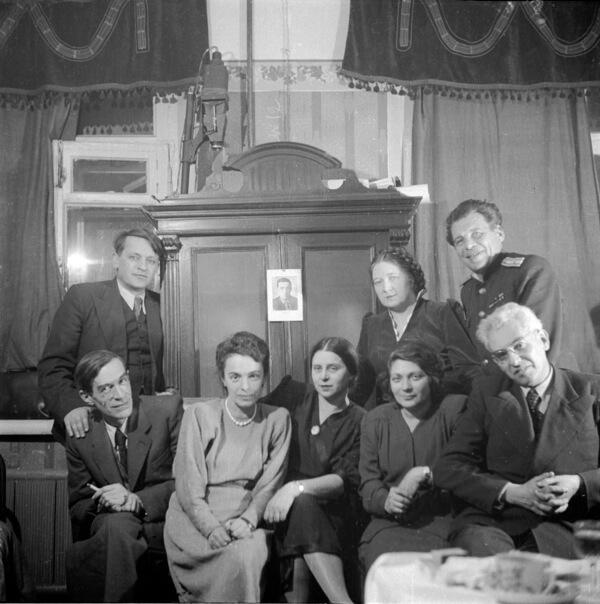
The famous "eight" disciples of Vygotsky. Standing: A. V. Zaporozhets, N. G. Morozov, and D. B. Elkonin, sitting: A. N. Leontiev, R. E. Levina, L. I. Bozhovich, L. S. Slavina, A. R. Luria.
Today his work is based as a national cultural-historical theory and foreign socio-cultural psychologists, cognitivity, anthropologists and linguists. The ideas of Vygotsky became a compulsory baggage of teachers around the world.
Why girls grow already with internal self-doubt
Why is each of the following lines are often no better than the previous
How would you define who you are, if not an avalanche of cultural clichés that bombard us daily others? How do you know the major and minor premise of a categorical syllogism lead to absolutely certain conclusions? What would you have learned if not for teachers, exercise book notes, classmates, classroom magazines and mark?
The reason for the ongoing influence of Vygotsky in that it shows the importance of all these elements that so easily escape our attention. published
Author: Oleg Bocharnikov
P. S. And remember, just changing your mind — together we change the world! ©
Source: newtonew.com/discussions/very-short-introduction-in-vygotsky
Lev Vygotsky — a really iconic figure for several generations of psychologists and humanists, and not only domestic.

After in 1962 in English was published his work "Thinking and speech", Vygotsky's ideas are widely spread in USA, Europe, and then in other countries. When one of us followers of the cultural-historical school URI to Bronfenbrenner from Cornell University have managed to come to the Soviet Union, he is on the threshold confused Vygotsky's daughter Gita Lvovna: "I Hope you know that your father God is for us?"
Students Vygotsky, however, considered him a genius during his lifetime. Remembers the same Luria, at the end of 20-ies "all of our group had devoted almost all day to our ambitious plan for the restructuring of psychology. L. S. Vygotsky was an idol. When he goes out of town, students wrote poetry in honor of his journey."

Lev Vygotsky's daughter Gita, 1934.
- In psychology Vygotsky came from among theatergoers and art lovers — from the world of "silver age" of Russian culture, in which he is well oriented.
- After the revolution, he wrote reviews of theatrical productions and taught in his hometown of Gomel, has produced several works on the drama of Shakespeare and has developed a framework of psychology of art.Before the revolution he attended people's University Shanyavsky in Moscow, where he attended lectures of the literary critic Yuri Eichenwald, philosopher Gustav Shpet and Chelpanov George. Through these courses, and independent reading (in several languages) Vygotsky received an excellent liberal education, which later was supplemented by science.
- After the revolution, he wrote reviews of theatrical productions and taught in his hometown of Gomel, has produced several works on the drama of Shakespeare and has developed a framework of psychology of art.
- In 1924 he again moved to Moscow at the invitation of the Moscow Institute of experimental psychology, which had finally found my calling.
In difficult conditions of post-revolutionary Russia, did not live up to 38 years, he has offered many solutions to psychological theory and education, which remain fresh today.
Already in 1926, Vygotsky stated: not only domestic but also world psychology is in crisis. Required a complete overhaul of its theoretical bases. All the opposing schools, the development of which rapidly occurs in the first quarter of the twentieth century can be divided into two parts — scientific and idealistic.
The first studies the reflexes and reactions to stimuli, and the latter position is most clearly expressed by Wilhelm Dilthey, who argued that "nature we explain, mental life we understand".
To overcome this opposition and this crisis can only be through the establishment of General psychology — via systematization and ordering of the individual human psyche and behavior. It was necessary to combine explanation and understanding in a unified and holistic approach to the analysis of the human psyche.
What are the most common to all phenomena studied by psychology, making the psychological facts of a variety of phenomena — from the saliva of the dog and to enjoying the tragedy that is common in Brede crazy and strict calculations math?
Lion Vygotskys work "the Historical meaning of psychological crisis"
Man is fundamentally different in that it is minds and characters — and that's what psychology until then ignored (behaviorism and reflexology), considered in isolation from social practice (phenomenology) or substitute the unconscious (psychoanalysis). The way out of the crisis Vygotsky saw in dialectical materialism — although skeptical of attempts to directly adapt the Marxist dialectic in psychology.
Marx was fundamentally important provisions defining the role of public relations, cannon and iconic activities in the formation of the psyche:
The spider makes operations resembling the operations of a weaver, and a bee in the construction of its wax cells doth confound some people-architects. But the worst architect from the best bee from the beginning is characterized in that, before building a cell from wax, he had already built it in my head.
— Karl Marx, Capital, Chapter 5. The labor process and the process of increasing the value of
General psychology, overcoming the disagreements of different schools and approaches in life Vygotsky does not appear — there is none now. But these revolutionary in all respects the years, many believed that it is quite possible: General psychological theory somewhere nearby, "we are now keeping in your hands the thread from her," he wrote in 1926 in the notes, which were later revised and published under the title "Historical meaning of psychological crisis". At that time Vygotsky is in the hospital "Zakhar'ino", where he was urgently gospitalerov due to the escalation of tuberculosis.
Luria later recalled: "the Doctors said that he had only 3 or 4 months, he was placed in a sanatorium... And then he frantically began to write, to leave behind some kind of basic work."
The classical scheme of behaviorism "stimulus — response" Vygotsky turns to the scheme of "stimulus — sign (medium) — response". It was at this time begins to form what will later be called "cultural-historical theory."
In 1927 Vygotsky is discharged from the hospital and together with his colleagues, began to study higher mental functions, which would bring him international fame. He is studying speech and symbolic activities, genetic mechanisms of formation of the psyche in the process of development of children's thinking.
The intermediate element converts the whole scene thinking, change all of its functions. That was a natural reaction, it becomes conscious and socially determined cultural behaviour.
3 thesis psychology Vygotsky
"... Every function in the cultural development of the child appears on the scene twice, in two plans, first social, then — psychological, first between people as a category interesanta, then within the child as an intrapsychic category. This applies equally to arbitrary attention, to logical memory, formation of concepts, the development of will".
Similar ideas at the time was expressed by the French psychologist and philosopher Pierre Janet: those forms of behaviour that others initially used in relation to the child ("wash your hands", "do not talk at the table"), he then transfers himself.
It looks like the famous phrase "General genetic law of cultural development", which Vygotsky suggested in "Thinking and speech". It is about the social origin of consciousness — but to interpret this formula is completely different.
Vygotsky does not claim that social factors entirely determine the development of the psyche. As well as says that consciousness arises out of natural, innate mechanisms of adaptation to the environment.
"Samooborony development is a continuous process, not a puppet, directed by the pulling of two strings". The child emerges as a separate identity only through interaction and active participation in the lives of others.
As shown by the experiments of Luria conducted in Uzbekistan in the early 30-ies, a logical operation that we consider to be natural, occur only in the context of formal learning. If you don't tell the school what is the circle, the idea of the circle itself won't come down from the Platonic world of ideas.
For the illiterate triangle is stand for tea or amulet, a solid circle is a coin, the unfinished circle is the month and nothing in common between them.
Suppose you were offered the following syllogism:
1. In the far North, where there is always snow, all bears are white.
2. New Earth located in the far North.
3. What color are the bears there?
If you have not been taught to think in abstract concepts and solve abstract puzzles, then you will answer something like "I've never been to the North and never seen bears" or "you need to ask the people who have been there and seen."

The pioneers are on the Maidan with the drums. Uzbekistan, 1928.
Vygotsky and Luria showed that many of the mechanisms of thinking, which seem to be universal, in fact, due to the culture, history and specific psychological tools that do not arise spontaneously, and absorbed in learning.
"The man introduces artificial stimuli, significare behavior, and using signs creates, by acting from the outside, the new connections in the brain"; "in the higher functional structure, determining whole or focus of the process is the sign and method of its use".
Vygotsky emphasizes that all forms of behavior characteristic of man, are symbolic in nature. Signs used as psychological tools: a simple example is knotted at the memory.
Let's see how the kids play with the cubes. It can be spontaneous play, in which the figures pile up on one another: this cube becomes the machine, the next a dog. The value of the figures is constantly changing, and the child does not come to some kind of sustainable solution. The child likes it — the process brings him pleasure, and the result doesn't matter.
The teacher who considers such an exercise pointless, can offer the child to build a certain shape on the drawn model. There is a clear goal — the child sees, what place should be each cube. But this game is not interesting to him. You can offer a third option: let the child will try to collect from cubes model, which is indicated only approximately. It cannot be copied — you need to find a solution.
In the first version of the game do not specify the behavior of the child — he is driven by a spontaneous flow of imagination. In the second version of the sign (painted model) acts as predsednika sample which you just need to copy it, but the child loses his own activity. Finally, in the third version of the game becomes the goal, but admits many solutions.
This is human behavior, mediated by signs, which give him purpose and meaning, not taking away freedom of choice.
"...By engaging in the behavior, the psychological tool alters the entire flow and structure of mental functions. It achieves this by specifying the structure of a new instrumental act just as a technical tool alters the process of natural adaptation by determining the form of labor operations". But the sign, unlike guns, directed not outward, but inward. It not only conveys a message but also acts as a means of self-determination.

The removal of the monument to Alexander III in Moscow, 1918.
"The immaturity of functions at the beginning of the training is General and the basic law"; "Pedagogy needs to focus not on yesterday's, and tomorrow's the day children's development. Only then will it be able to cause the learning process to life the processes of development that now lie in the zone of proximal development".
The concept of "zone of proximal development" is one of the most famous contributions of Vygotsky in educational theory. Own child can perform a certain range of tasks. With the help of probing questions and prompts of the teacher he can do much more. The gap between these two conditions is called the zone of proximal development. It was through her always carried out any training.
To explain this concept, Vygotsky introduces the metaphor of the gardener who needs to monitor not only ripe, but ripening fruit. Education should focus on the future — something that the child is not yet able, but can learn. It is important to stay within this zone is not to stop the lessons but not try to jump far ahead.
Man cannot exist apart from others — any development always takes place in the team. Modern science has done much not only because it stands on the shoulders of giants — not least a whole lot of people, which for the majority remains anonymous. Genuine talents arise not despite, but because of the surrounding conditions, which encourage and guide their development.
And here Vygotsky pedagogy beyond the class rooms: to provide comprehensive human development, must change the whole society.
Many of the ideas and concepts of Vygotsky remained unformed. Experimental work to verify his daring hypotheses are mainly conducted not by him but by his followers and disciples (so most of the specific examples in this article are taken from Luria). Vygotsky died in 1934, unrecognized, reviled for many years and forgotten by everyone except a narrow circle of like-minded people. Interest in his theory was revived only in the 50-60-ies on the wave of "semiotic turn" in the Humanities.

The famous "eight" disciples of Vygotsky. Standing: A. V. Zaporozhets, N. G. Morozov, and D. B. Elkonin, sitting: A. N. Leontiev, R. E. Levina, L. I. Bozhovich, L. S. Slavina, A. R. Luria.
Today his work is based as a national cultural-historical theory and foreign socio-cultural psychologists, cognitivity, anthropologists and linguists. The ideas of Vygotsky became a compulsory baggage of teachers around the world.
Why girls grow already with internal self-doubt
Why is each of the following lines are often no better than the previous
How would you define who you are, if not an avalanche of cultural clichés that bombard us daily others? How do you know the major and minor premise of a categorical syllogism lead to absolutely certain conclusions? What would you have learned if not for teachers, exercise book notes, classmates, classroom magazines and mark?
The reason for the ongoing influence of Vygotsky in that it shows the importance of all these elements that so easily escape our attention. published
Author: Oleg Bocharnikov
P. S. And remember, just changing your mind — together we change the world! ©
Source: newtonew.com/discussions/very-short-introduction-in-vygotsky



